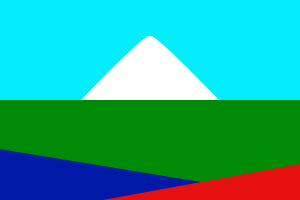Pehuenche facts for kids
The Pehuenche (also called Pewenche) are an indigenous people from South America. Their name means "people of the pehuen" in their language, Mapudungun. The "pehuen" is a special tree called the monkey-puzzle tree.
These people live in the Andes Mountains, mostly in what is now south-central Chile and parts of Argentina. They got their name because they relied on the seeds of the monkey-puzzle tree for food.
In the 1500s, the Pehuenche lived in the mountains. Over time, they became more connected with the Mapuche people. Even today, in the 21st century, they still live on some of their traditional lands.
Contents
Pehuenche History and Conflicts
The Pehuenche people were involved in several conflicts during the 1600s and 1700s. They often came down from the mountains to fight in the lowlands of Chile. For example, they attacked the Spanish near the Maule River in 1657.
They also fought against the Mapuche in January 1767. Later, in 1769, they attacked the Spanish in a place called Isla del Laja.
In the 1860s, during the Occupation of Araucanía by Chile, the Pehuenche decided to stay neutral. This meant they did not pick a side in the conflict. A Pehuenche chief named Pichiñán spoke against the Moluche people, who wanted to go to war. He said the Moluche were involved in robbery.
Historians believe the Pehuenche stayed neutral because their lands in the Andes were not being taken over. However, as both Argentina and Chile expanded, the Pehuenche faced new challenges. In March 1881, Pehuenches attacked an Argentine outpost called Chos Malal. They fought against the soldiers there.
Pehuenche Culture and Lifestyle
A Spanish writer first described the Pehuenche way of life in 1558. He noted that these people did not farm. Instead, they got their food by hunting animals in the valleys where they lived.
They hunted many animals, including guanacos, jaguars, cougars, foxes, small deer, and mountain cats. They used bows and arrows for hunting. Their homes were simple, made from four poles covered with animal skins.
The Pehuenche were nomadic, meaning they moved from place to place. They did not have permanent homes. Their clothes were blankets made from animal skins.
Food from the Monkey-Puzzle Tree
The most important food for the Pehuenche was not mentioned by that early writer. It was the seeds from the monkey-puzzle tree, which they called "Pehuen." Harvesting these seeds was a key part of their diet.
Horses and Their Diet
Later, the Pehuenche started to include horse meat in their diet. Wild horses, originally brought by the Spanish, had spread across the plains. At first, the Pehuenche hunted these horses like any other animal.
But soon, they began to raise horses themselves for both meat and travel. To keep the horse meat from spoiling, they would dry it in the sun. This dried meat was called charqui.
Language and Dress
Juan Ignacio Molina, a historian, wrote about the Pehuenche in 1787. He said their language and religion were similar to other Mapuche groups. However, their clothing was different.
Pehuenche men wore skirts instead of trousers. They also wore earrings and special shawls called mantillas. Molina described them as nomadic and very hardworking.
See also
 In Spanish: Pehuenches para niños
In Spanish: Pehuenches para niños


